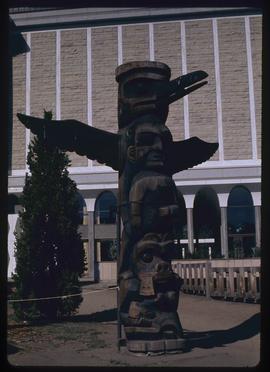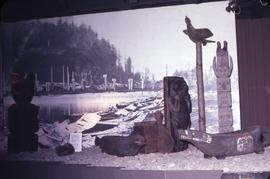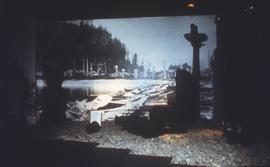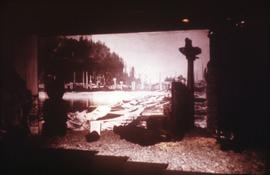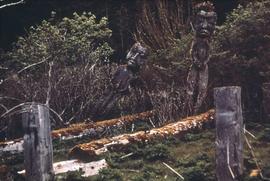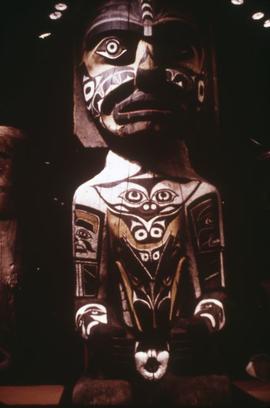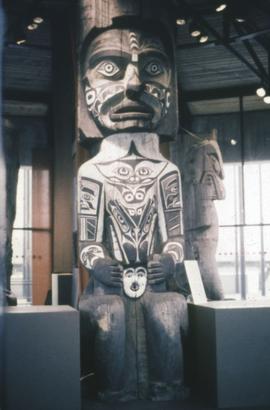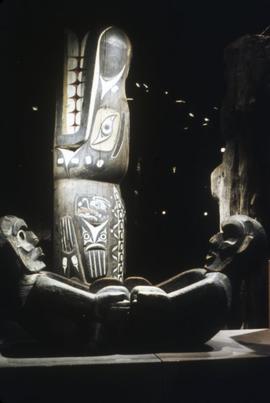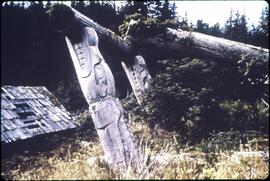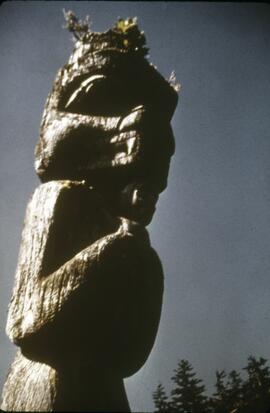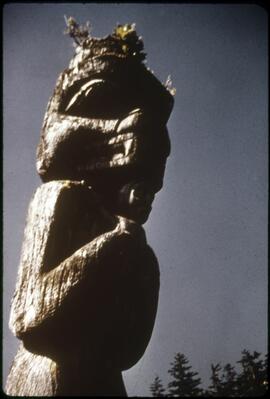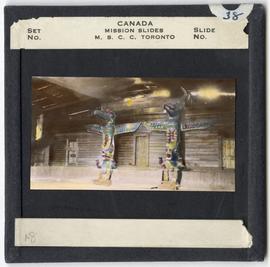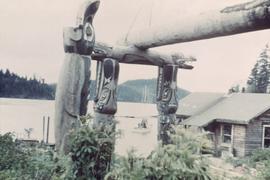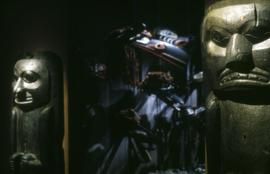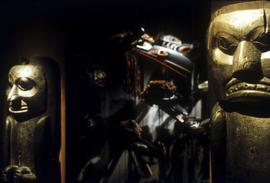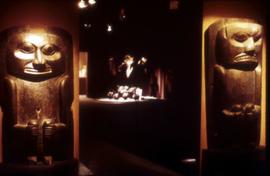- 1-4-C-6 (63.2-3)
- File
- [199-?]
The majority of this file contains historical images of the Tlingit and Tahltan First Nations and their respective villages. The other images are of Tlingit or Tahltan artifacts housed in various museums in Canada and the United States. The historic images are of Tlingit or Tahltan villages which include images of Northwest Coast architecture, houses posts and totem poles, canoes, and other household items such as bowls, weavings, and bentwood boxes. There are also some images of the Tlingit people in regalia. The textual records contained in this file is a paper titled "The History of the Babine Carriers," written by Wilfred Adam for the class Education 479, Cross Cultural Education.

